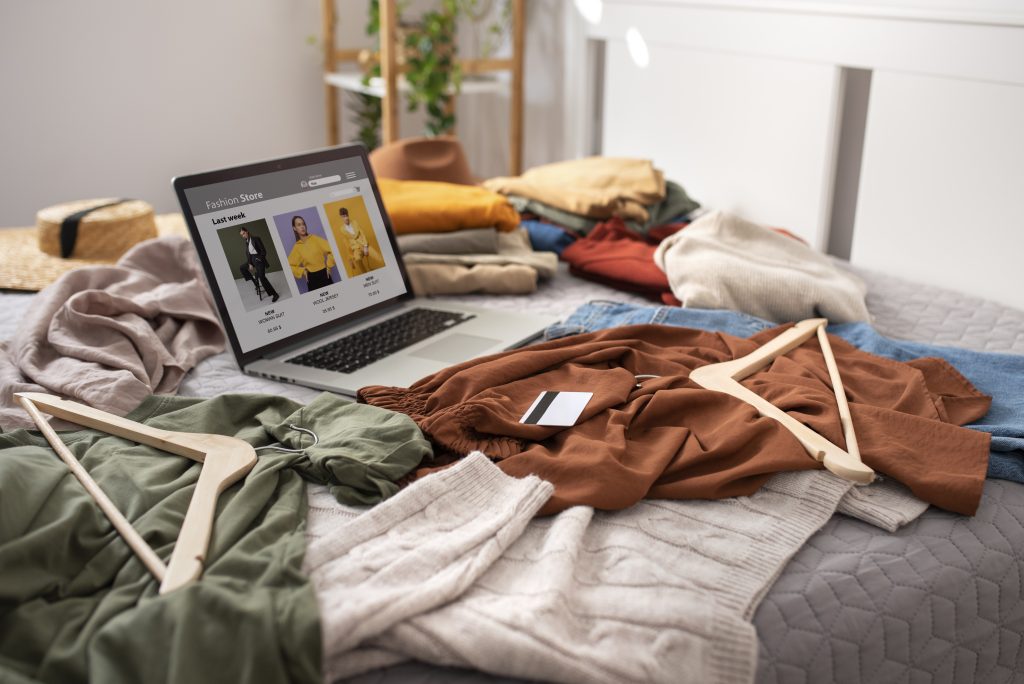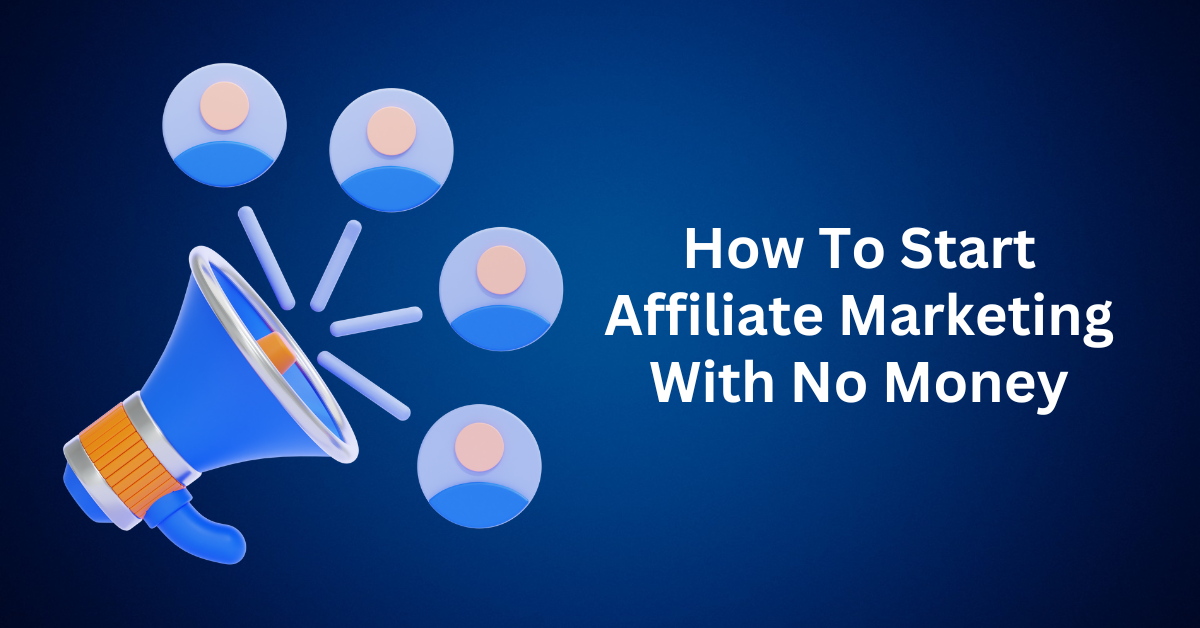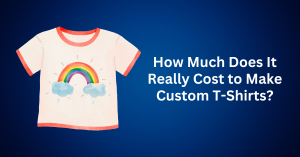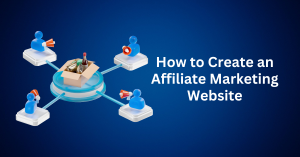In today’s digital-first world, the success of your clothing brand hinges entirely on your online presence. Your social media profiles are your virtual runway, video reels act as your dynamic commercials, and your ecommerce site serves as the crucial window display that invites shoppers inside. But with thousands of fashion labels competing for attention, merely having an online footprint isn’t enough. You need a focused, effective marketing plan designed for the modern consumer.
In this comprehensive guide, we’ll explore 17 actionable strategies to help you market your clothing brand online in 2025. From mastering SEO and personalizing customer experiences to leveraging influencer partnerships and optimizing social media ads, you’ll discover how to attract loyal customers and boost your sales like never before.

Table of Contents
ToggleWhy Online Marketing Is Critical for Clothing Brands
If you’re wondering whether investing in online marketing is worth it, the answer is a resounding yes. In fact, in the competitive fashion industry, digital marketing is no longer optional; it’s essential.
Consumers today shop predominantly from their smartphones and discover new brands through social media platforms. Purchase decisions are often made in seconds as users scroll through endless feeds filled with eye-catching content. If your clothing brand isn’t visible online, you’re essentially invisible to millions of potential buyers.
Here’s why it matters:
- Global online fashion sales are on track to exceed $1.6 trillion by 2030. This means the online fashion market is booming, with huge opportunities for growth.
- More than 38% of consumers find new fashion brands via social media ads and digital content. Social media isn’t just a channel; it’s a primary discovery tool.
- Shoppers spend more time browsing online stores than physical ones. This trend highlights the growing importance of a smooth and engaging ecommerce experience.
Simply put, online marketing channels like SEO, email marketing, and short-form video are the engines that drive brand awareness, traffic, and conversions. Neglect these, and you risk losing customers to brands that capitalize on digital opportunities.
Start Your Clothing Brand Today
17 Essential Fashion Brand Marketing Strategies to Grow Your Clothing Business

Building a thriving clothing brand online requires creativity, strategy, and consistent effort. To help you get started, here are the first three of 17 proven marketing strategies that will set your brand apart and drive sales this year.
1. Use Visuals That Help Customers Envision Your Clothes in Real Life
In fashion marketing, visuals are everything. Every image you share, whether on your website, social media, or product listings, should do more than simply display your clothing. The goal is to inspire customers to picture themselves wearing your pieces, to evoke emotion, and ultimately to move them closer to making a purchase.
To create compelling product visuals, start with the basics. Use high-resolution photos and capture your clothing from multiple angles so shoppers can appreciate every detail. Set up a clean, distraction-free background with natural or well-controlled lighting to ensure your pieces stand out. A sturdy tripod is a smart investment, helping maintain consistent framing and sharp focus in every shot.
However, don’t limit yourself to traditional studio-style imagery. Take your brand a step further by showcasing your apparel in authentic, real-world environments. Street-style photos in urban settings, behind-the-scenes glimpses from your production space, or lifestyle shots at relatable events can make your clothing feel more tangible and aspirational.
For maximum impact, it’s important to match your photo locations with your brand identity. For example, if your style leans sleek and urban, a nighttime cityscape will highlight that vibe. On the other hand, if your brand feels more outdoorsy and relaxed, nature settings will better reflect that personality. Meanwhile, a high-fashion brand can draw inspiration from runway looks or editorial-style shoots. Ultimately, aligning your visuals with your brand story helps customers form an emotional connection and imagine how your pieces fit into their own lives.
2. Craft Short-Form Videos That Bring Your Clothing Brand to Life
Video content is king, and clothing brands that leverage it effectively enjoy significantly higher engagement and conversions. Short videos have the power to capture attention instantly and allow potential customers to see your products in motion. This builds a stronger emotional connection than static images alone.
To make the most of video in your fashion marketing, start by keeping videos concise. Aim for under 60 seconds to maintain viewer interest and boost watch-through rates. Show your clothing being worn in dynamic, real-life ways, whether that’s walking down the street, spinning to show movement, or layering pieces to highlight versatility.
Diversity is also key. By featuring a broad range of models, your brand can resonate with more people, making your content feel both inclusive and authentic. In addition to standard product showcases, consider sharing behind-the-scenes clips, styling tips, or snapshots of your design and production process. These extra touches add personality and help foster a deeper connection with your audience.
To maximize your reach, focus on platforms that prioritize video content. For instance, Instagram Reels, TikTok, and Pinterest Video Pins are ideal channels for fashion brands, as they connect you with viewers who are actively engaging with short-form, visual-first content. At this point, integrating video into your marketing mix isn’t just a trend—it’s a necessity for growth and visibility in today’s digital landscape.
3. Leverage TikTok Trends to Reach Gen Z and New Audiences
TikTok has evolved far beyond its origins as a simple entertainment app. It’s now a powerhouse marketing platform, particularly for fashion brands targeting younger, trend-savvy consumers. With an algorithm that favours engaging, trend-driven content, TikTok offers an unparalleled opportunity to go viral and rapidly grow your audience.
To succeed on TikTok as a clothing brand, start by creating a dedicated account and posting consistently. Regular content keeps your brand visible and helps the algorithm recognize your activity. Embrace trending sounds, hashtags, and video formats to boost your chances of landing on the For You Page (FYP), where discoverability can skyrocket.
Engagement is just as important as content creation. Build community by dueting with your followers, replying to comments with video responses, and resharing user-generated content. These interactions not only strengthen relationships but also demonstrate that your brand is listening and responsive.
For content ideas, consider sharing behind-the-scenes footage, styling hacks, or launching lighthearted brand challenges. These types of videos foster authenticity and trust, which are key to building a loyal following. However, authenticity should always come first. Only participate in trends that align with your brand’s voice, personality, and values. Audiences are quick to detect inauthenticity, and trying too hard can backfire.
Lastly, remember that timing is everything. TikTok trends move fast, so quick execution is essential to stay relevant and make the most of viral opportunities. With the right mix of creativity, consistency, and authenticity, your fashion brand can thrive on TikTok and build lasting connections with a new generation of shoppers.
4. Leverage Instagram Reels and Stories to Showcase Your Brand and Drive Sales
Instagram remains a dominant force in fashion marketing, offering dynamic ways to engage your audience through both stunning visuals and immersive video content.
Why Instagram Reels?
Reels are one of Instagram’s most powerful formats, delivering high engagement rates. Some influencer Reels see up to 2.08% engagement, outperforming carousels and static posts. With up to 3 minutes of video time, you have plenty of space to share in-depth stories, from exclusive product reveals to customer testimonials and styling tips that resonate.
The power of Stories: Instagram Stories captivate over 500 million daily users, with businesses accounting for about a third of the most-viewed Stories. Use interactive features like polls, quizzes, and countdown timers to boost engagement and create real-time connections. Stories offer a behind-the-scenes look at your design process or sneak peeks of upcoming launches, perfect for building anticipation.
Seamless Shopping Integration: Instagram’s shopping tools let you tag products directly in Reels and Stories, simplifying the path from discovery to purchase. While in-app Checkout isn’t yet available everywhere, these product tags still drive significant traffic to your ecommerce store.
Optimize with hashtags: Hashtags still matter for discoverability, but less is more. Using 2 to 3 targeted, brand-specific hashtags can increase reach without appearing spammy.
Start Your Clothing Brand Today
5. Build a Magnetic Brand Presence on Pinterest
Pinterest is more than a social platform; it’s a thriving discovery and shopping destination for fashion lovers. In fact, Pinterest users tend to spend almost twice as much as users on other social networks, making it an ideal place to showcase your clothing brand.
Create visually compelling Pins: Use high-quality, vertically oriented images optimized for Pinterest’s layout. Organize your content into style-themed boards that reflect your brand’s aesthetic and target audience.
Turn inspiration into sales: Take advantage of Product Pins and Pinterest’s in-app checkout options to streamline the buying process directly from the platform.
Optimize for search: Pinterest functions as a visual search engine. Include relevant keywords in your Pin descriptions and titles, and keep hashtags to a concise 3–5 per Pin. This improves visibility and ensures your content stays discoverable long-term.
Stand out with cohesive branding: Every Pin should tell your brand’s story at a glance, whether through colour schemes, mood, or messaging. Consistency here builds brand recognition and trust with shoppers.
6. Prioritize SEO to Drive Organic Traffic and Boost Your Clothing Brand Visibility
If you’re looking for sustainable, cost-effective traffic, optimizing your clothing brand for search engines is essential. SEO brings in shoppers who are actively searching for products like yours, meaning the traffic you attract is not only highly targeted but also more likely to convert into sales.
Start with thorough keyword research. To do this, use tools like Google Keyword Planner, Ahrefs, or Ubersuggest to discover the search terms your ideal customers are using. Then, focus on keywords that reflect your specific niche, product styles, and customer interests. By aligning your content with these keywords, you ensure it matches the intent behind customer searches.
Once you have your keywords, optimize your website and content strategically. Incorporate them naturally into product titles and descriptions, marketing copy, and image alt text, which also improves accessibility. Make sure your page titles, meta descriptions, headers, and URLs are keyword-rich and clearly structured to help both users and search engines understand your content.
Take advantage of SEO tools available on platforms like WordPress (with plugins like Yoast SEO) or Shopify, which offer built-in features for managing metadata and keyword integration. Regularly audit your site using tools like Google Search Console or Screaming Frog to catch and fix issues such as broken links, slow page load times, or indexing errors.
While SEO is a long-term strategy, its impact is lasting. Unlike paid ads that stop bringing traffic the moment you pause them, well-executed SEO continues to drive qualified visitors to your store over time, without ongoing advertising costs. It’s one of the smartest investments you can make for the sustained growth of your fashion brand.
7. Turn Your Customers into Your Clothing Brand Ambassadors with User-Generated Content
Nothing builds trust and drives sales quite like real customers showcasing your apparel. User-generated content (UGC) such as reviews, unboxing videos, selfies, and testimonials offers authentic social proof that helps turn casual browsers into confident buyers. When shoppers see real people enjoying your products, they’re more likely to believe in the quality and appeal of your brand.
Encouraging your customers to share their experiences is key. Invite them to tag your brand in their social media posts and highlight how they style your pieces. With their permission, feature the best content on your website, in email newsletters, and across your social platforms. This not only celebrates your customers but also creates relatable, persuasive content for new audiences.
To boost reach and engagement, create a unique branded hashtag your community can rally around. Launch TikTok or Instagram challenges that encourage participation and spark viral content. Offering small rewards, giveaways, or exclusive discounts can also incentivize more customers to contribute and engage with your brand.
Brands like Converse do this exceptionally well by showcasing real customer photos on their product pages, adding a layer of authenticity that builds trust and increases conversions. But the value of UGC goes beyond free advertising. It strengthens your brand community, deepens customer loyalty, and fills your content calendar with fresh, relevant material. Over time, this creates a powerful cycle of trust, advocacy, and organic growth.
8. Run Giveaway Campaigns to Spark Buzz Without Breaking the Bank
If you’re looking for a cost-effective way to market your clothing brand without burning through your ad budget, giveaway campaigns are a smart strategy. They’re not just about giving away free products. Instead, they’re about generating buzz, boosting engagement, and driving organic word-of-mouth growth that can pay off long after the giveaway ends.
The key to a successful giveaway is crafting an experience that encourages interaction and sharing. Ask participants to complete simple actions to enter, like tagging friends, liking your posts, or sharing your Instagram Stories. These actions help increase your visibility and reach new potential followers through your audience’s networks.
Choose prizes that align with current trends or highlight new product drops, such as a stylish hoodie, an exclusive tee, or a full outfit bundle. Make the reward enticing enough to spark genuine interest and participation. You can also encourage entrants to submit photos or videos showcasing how they’d style your merch, then feature the best entries using high-quality visuals across your channels.
Once the giveaway ends, make the winner announcement a moment to remember. Share a dedicated post or Story celebrating them (with their permission), adding a personal touch that reinforces your brand’s authenticity. This kind of recognition can turn a casual participant into a loyal fan and possibly even a brand ambassador, further amplifying your reach and building community around your label.
9. Capitalize on Seasonal Discounts and Timely Promotions
Seasonal sales are a smart, low-cost way to market your clothing brand and drive timely purchases. Holidays and shifting fashion cycles create natural momentum, giving you the perfect opportunity to launch targeted promotions and encourage shoppers to act.
While events like Black Friday and Cyber Monday are obvious choices, don’t limit yourself to just the major shopping holidays. Get creative with seasonal moments that align with your brand’s vibe. Consider promotions tied to spring wardrobe refreshes, limited-edition holiday collections like Ugly Christmas Sweater sales, or flash deals on trending styles that match the current season or cultural mood.
To stand out, experiment with unique offers such as mystery discounts or flash sales with countdown timers. These types of promotions create a sense of urgency that can boost conversions quickly. More importantly, well-timed seasonal campaigns often encourage social sharing and user-generated content, which naturally expands your brand’s visibility without additional ad spend.
By tapping into the rhythm of the calendar and aligning your promotions with timely trends, you not only increase sales but also keep your audience engaged and excited throughout the year.
10. Harness the Power of Email Marketing to Drive Repeat Sales
Despite the growing influence of social media, email marketing continues to be one of the most powerful and reliable tools for growing a clothing brand online. Unlike social platforms, where algorithms control who sees your content, email gives you direct access to your audience. People who already know your brand are more likely to convert.
Email is incredibly versatile. Use it to share exclusive offers, early access to new product drops, and limited-time promotions that reward subscribers for their loyalty. Go beyond sales messaging by providing value. Send styling tips, outfit ideas, or curated product recommendations tailored to customer preferences.
Consistency is key. Regular updates keep your brand top-of-mind and foster a deeper connection with your audience. By delivering personalized, relevant content straight to your subscribers’ inboxes, you build trust, boost engagement, and encourage repeat purchases.
Over time, a well-nurtured email list becomes one of your most valuable business assets, driving steady, predictable sales while strengthening customer loyalty in a way that social media alone can’t match.
11. Partner with Micro-Influencers for Authentic Reach and Engagement
Influencer marketing remains a powerful tool for fashion brands, but the true impact often comes from working with micro-influencers. These creators may have smaller followings, but their audiences are highly engaged and place real trust in their recommendations, making them incredibly effective brand advocates.
Rather than chasing influencers with massive follower counts, focus on those whose values, aesthetics, and audience align closely with your brand. Niche influencers often deliver stronger engagement, more authentic content, and better conversion rates because their followers see them as relatable and trustworthy.
When reaching out, take a personalized approach. Send direct messages that clearly outline your collaboration idea and how it benefits both parties. Offer meaningful incentives, whether it’s free merchandise, commission-based compensation, or paid campaigns. Most importantly, encourage influencers to showcase your products in natural, real-world settings that reflect their unique voice and style.
Done right, micro-influencer partnerships can significantly extend your brand’s reach, boost credibility, and generate high-quality user-generated content. Over time, these relationships not only drive traffic and sales but also help convert casual followers into loyal, long-term customers.
12. Stay Ahead by Tapping into Pop Culture Trends in Real Time
Pop culture evolves at lightning speed, and fashion brands that react quickly to viral moments and social trends stay relevant and top-of-mind.
Monitor trending memes, challenges, or social conversations that align with your brand’s identity and act fast. Whether it’s launching a timely product or posting a clever campaign, riding the wave of cultural moments can boost engagement and sales.
Thanks to print-on-demand services like Printful, you can design, list, and sell trendy apparel instantly, without committing to bulk inventory. When the trend fades, simply retire the listing and stay flexible.
Start Your Clothing Brand Today
13. Invest in Paid Advertising for Immediate, Targeted Growth
While organic growth lays a solid foundation, paid advertising is indispensable for fast, precise exposure in the crowded fashion market. Relying solely on SEO or organic social reach limits your potential to scale quickly.
Google Ads puts your clothing brand front and center by bidding on relevant keywords. Your ads appear above search results, capturing the attention of shoppers actively looking for apparel like yours. With Google reporting an average $11 return for every $1 spent, paid search ads offer an undeniable ROI, especially when millions of searches happen every minute.
Social platforms like Facebook and Instagram elevate this further with hyper-targeted ads that reach users based on demographics, interests, and past behaviours. Their sophisticated tools allow you to segment your audience precisely, making each advertising dollar count and giving you measurable results.
A smart paid ad strategy helps you cut through the noise, accelerate brand visibility, and drive qualified traffic straight to your online store.
14. Leverage Analytics to Continuously Optimize Your Marketing Efforts
Wondering if your online marketing is truly connecting with your audience? Don’t rely on guesswork. Analytics can give you the clarity you need to make informed decisions and drive better results.
Every major platform, from Instagram and TikTok to Google Analytics, provides in-depth data to help you assess performance. By tracking the right metrics, you can understand what’s working, what’s falling flat, and where to focus your efforts. For instance, comparing engagement to impressions reveals how compelling your content really is. If you’re getting plenty of views but little interaction, it’s a sign your message isn’t resonating.
Pay close attention to your top-performing posts. Look for patterns in hashtags, content formats, or messaging that consistently deliver results. This helps you replicate success and fine-tune future campaigns. Additionally, dig into audience demographics using tools like Facebook Audience Insights or Instagram analytics. Understanding your followers’ age, location, and interests allows you to tailor content more precisely and create messages that truly speak to them.
Use this data to experiment. Test different post types, adjust your publishing schedule, and try new hashtag strategies. Over time, these insights help you continuously refine your approach, improve your return on investment, and build a stronger, more connected online community around your clothing brand.
15. Stand Out with Product Personalization Options
Offering personalized apparel is a powerful way to differentiate your clothing brand in a crowded market. Customization allows shoppers to create something truly unique, whether it’s a hoodie with their name, a tee with a special message, or a design that reflects their personality. Tools like Printful’s Product Personalization feature make it easy to offer this experience, allowing customers to modify text or upload images directly on select products.
Personalized items aren’t just another purchase. They carry emotional value. Whether it’s for a gift, a milestone, or self-expression, customized apparel feels more meaningful, which increases its perceived value and deepens customer loyalty.
To successfully promote your personalization options, start by showcasing real examples. Feature user-generated content like photos of happy customers wearing their custom pieces on your website, social media, and email campaigns. Make the personalization feature a clear focal point in your marketing, emphasizing how easy it is and how special it makes each item.
If you’re selling on Etsy with Printful, enabling personalization is simple. Just turn on the feature in your Shop Manager and provide clear, step-by-step instructions so customers know exactly how to customize their order. This extra touch can significantly increase engagement, customer satisfaction, and repeat purchases, while helping your brand stand out in an increasingly competitive space.
16. Build Customer Loyalty with a Rewarding Loyalty Program
A well-designed loyalty program can be a game-changer for your clothing brand, turning occasional buyers into repeat customers who genuinely connect with your brand. While offering high-quality products is essential, adding loyalty incentives gives shoppers extra motivation to keep coming back.
Loyalty programs offer several key benefits. They can reward purchases with points that customers can redeem for discounts or free merchandise, making every transaction feel more valuable. You can also create exclusive perks, such as early access to new collections or invite-only sales events, which make loyal customers feel like insiders. Plus, by leveraging purchase history, you can offer personalized rewards and promotions that speak directly to each shopper’s preferences, enhancing both satisfaction and engagement.
To create an effective loyalty program, start simple. Point-based systems or tiered rewards are easy to understand and implement. Make the sign-up process seamless. You may use website pop-ups, email forms, or links on social media to encourage enrollment. Once the program is live, promote the benefits consistently across all your channels to keep it top of mind for customers.
Don’t forget to make the experience feel special. Celebrate customer milestones like birthdays or anniversaries with surprise discounts or gifts, adding a thoughtful touch that deepens emotional loyalty. Finally, monitor engagement metrics regularly to see what’s working and refine the program to ensure it continues to drive customer satisfaction and long-term growth.
17. Boost Your Clothing Brand Engagement and Sales Through Live Streaming
Live streaming is revolutionizing ecommerce, offering fashion brands an authentic way to connect with audiences in real time. With over 28% of global internet users watching live videos, apparel brands hold a top spot for sales during live streams.
Why live streaming works: It creates a raw, unfiltered experience that builds trust and humanizes your brand.
Maximize your live streams by:
- Defining a clear purpose. Launch new collections, style outfits, or host Q&As.
- Promoting streams ahead of time via social media, email, and your website.
- Engaging viewers live by answering questions and involving them with polls or votes.
- Offering exclusive discounts or free shipping is only available during the broadcast.
- Collaborating with micro-influencers to tap into new audiences.
- Saving and repurposing content for YouTube or your online store for ongoing value.
Consistency is key. Schedule regular live sessions that our audience can anticipate and look forward to. Live streaming turns passive browsing into active buying, bringing your clothing brand to life and strengthening customer relationships.
Final Thoughts: 17 Ways to Market Your Clothing Brand Online
You’re not just selling clothes. Instead, you’re building a brand, a voice, and a genuine connection with your audience. In fact, 2025 offers more powerful and accessible tools than ever before to market a clothing brand online. From running smart advertising campaigns to cultivating loyal customers through engaging content and personalization, success is well within reach—as long as you’re ready to show up and play smart.
Yes, the fashion industry is fiercely competitive. That’s what makes it thrilling. So, what separates thriving brands from those that fade away? A clear marketing strategy, a strong brand identity, and relentless execution.
Whether you’re launching your first online clothing brand or scaling an existing one, here’s the bottom line:
- Focus on creating high-quality, scroll-stopping visuals.
- Use data, not guesses, to guide your marketing decisions.
- Show up where your audience spends time, whether that’s TikTok, Instagram, or their inbox.
- Don’t just follow trends. Lead with your unique voice and authentic values.
Marketing your clothing line today is no longer just about pushing products. It’s about building presence, sparking interest, and creating a community your target market wants to join.
Now it’s your turn. Pick a few strategies from this guide, test them, refine them, and keep moving forward. Success doesn’t happen overnight, but the first step is clicking Publish.







